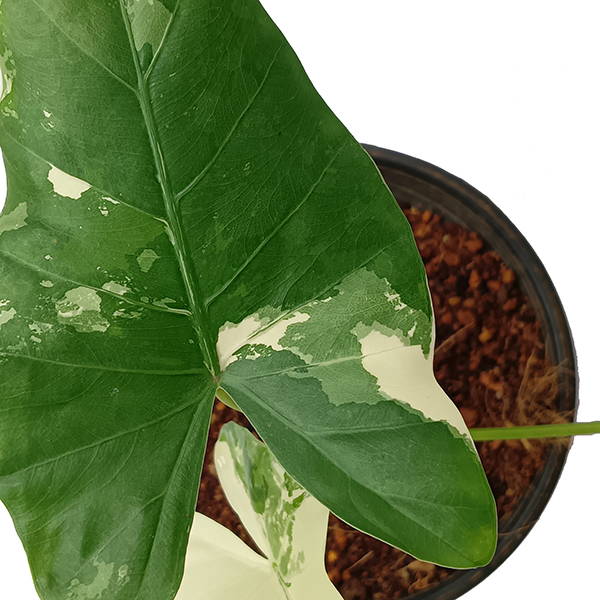
Common Name: Barrel Cacti, Prickly Pear, Pincushion Cactus, African Milk Tree, Pencil Cactus, Domino Cactus, Peanut Cactus, Peruvian Cactus, Orchid Cactus
Botanical Name: Cactaceae species, Family: Cactaceae
Cactaceae, better known as cactus, is a large family of plants that come in many shapes and sizes. They are all straightforward to care for; given the right conditions, many species may bloom. Many cacti are native to Mexico and the Southwestern U.S., and like most houseplants, they require care similar to what they would experience in nature. Most types, like cerus, echinopsis, and even euphorbia (not a cactus, but is cared for like one!) have the exact needs and can be grouped in a brightly lit room to live their best life.
Important! The sharp spines common to most varieties of cactaceae can poke and pierce the skin, so be very careful when handling the plant or if you have pets and small children. Some species of cacti are toxic to pets, so be sure to research any plant you bring into your home!
Light
Plenty of bright indirect sunlight is needed to support cacti. These indoor plants like lots of light, even during the winter months. Some varieties of cactus can handle direct light, but be careful because direct sunlight can be damaging, especially for young plants or new growth. When in doubt, it’s always best to keep cactus houseplants in bright indirect light.
Water
Cactus are drought tolerant houseplants, and the soil must be allowed to dry out between watering. Water as soon as the soil is completely dried out, while the plant actively grows during the spring and summer. Cacti can go for extended periods of time without water during winter, when the plant may be dormant. The overall conditions, like temperature and sunlight, will determine how often it requires water! If your cactus (or cactus-like plant) lives near a sunny window and the temperatures are consistently over 70°F, then you will find that it will require water more frequently than one living in a cooler and darker spot.
When you do water, drench the soil and empty the cache pot or saucer of standing water. Cactus are susceptible to root rot if they receive too much water, and the threshold for over-watering is relatively low. It is often better to under-water than over-water, so if the plant is not showing signs of dehydration and you’re unsure about when to water, there is no harm in waiting a few more days.
Soil
Aloe, succulents, and cacti require that their potting soil should contain more drainage materials (compared to soils for most indoor plants), such as wood chips, perlite, coarse sand, or pumice, to allow the water to drain quickly. Most bagged soil-less potting soil made for indoor plants will work fine but remember that you must let the soil dry out completely before watering it again. You can add cactus potting soil mix to your potting soil to help the water drain if you feel the roots are staying wet for too long! A great time to do this is when you need to re-pot them into a larger pot.
Temperature
Warm temperatures are ideal, similar to what the cactus would experience in nature. Generally, anything above 50°F degrees is fine, but the plant will be happier if kept in an area of at least 65°F. Chilly drafts can be a problem, so keep your cactus clear of exterior doors and drafty locations.
Humidity
Dry conditions are best for cactus houseplants. Cacti are not very adaptable when it comes to humidity and prefer to be in areas without increased dampness in the air. Low or average humidity is ideal. Avoid placing cactus in bathrooms, kitchens, or areas prone to increased humidity.
Fertilizer
Cactus are not heavy feeders but use a diluted liquid fertilizer monthly during the growing season to help the plant push out new growth. Stop fertilizing cactus houseplants during the winter when the plant is not actively growing.
Pro Tips
As slow-growing houseplants, cacti typically need to be re-potted every other year. Cactus are comfortable being root bound, so there is usually no rush to re-pot. When it is time to re-pot, wear thick gloves to protect your hands and select a pot that is 1-2 inches larger in diameter than the existing pot.
A dormancy or rest period during the winter can help promote new growth and possibly even blooms during the growing season. Give the plant time to rest by cutting back on the water and avoid placing the plant in areas with hot temperatures during the winter.
Mature and healthy plants will send out offshoots or pups. These can be removed and propagated. It is best to remove an offshoot when re-potting. Using clean shears or a knife, remove the side growth and let the sliced end callous over for a few days before re-potting the new plant in its pot.
Not all cacti are pet friendly. We recommend researching the potential toxicity for every plant you bring into your home. The main concern with cacti are the sharp spines that can easily pierce the skin! Always wear gloves when handling these types of indoor plants!





